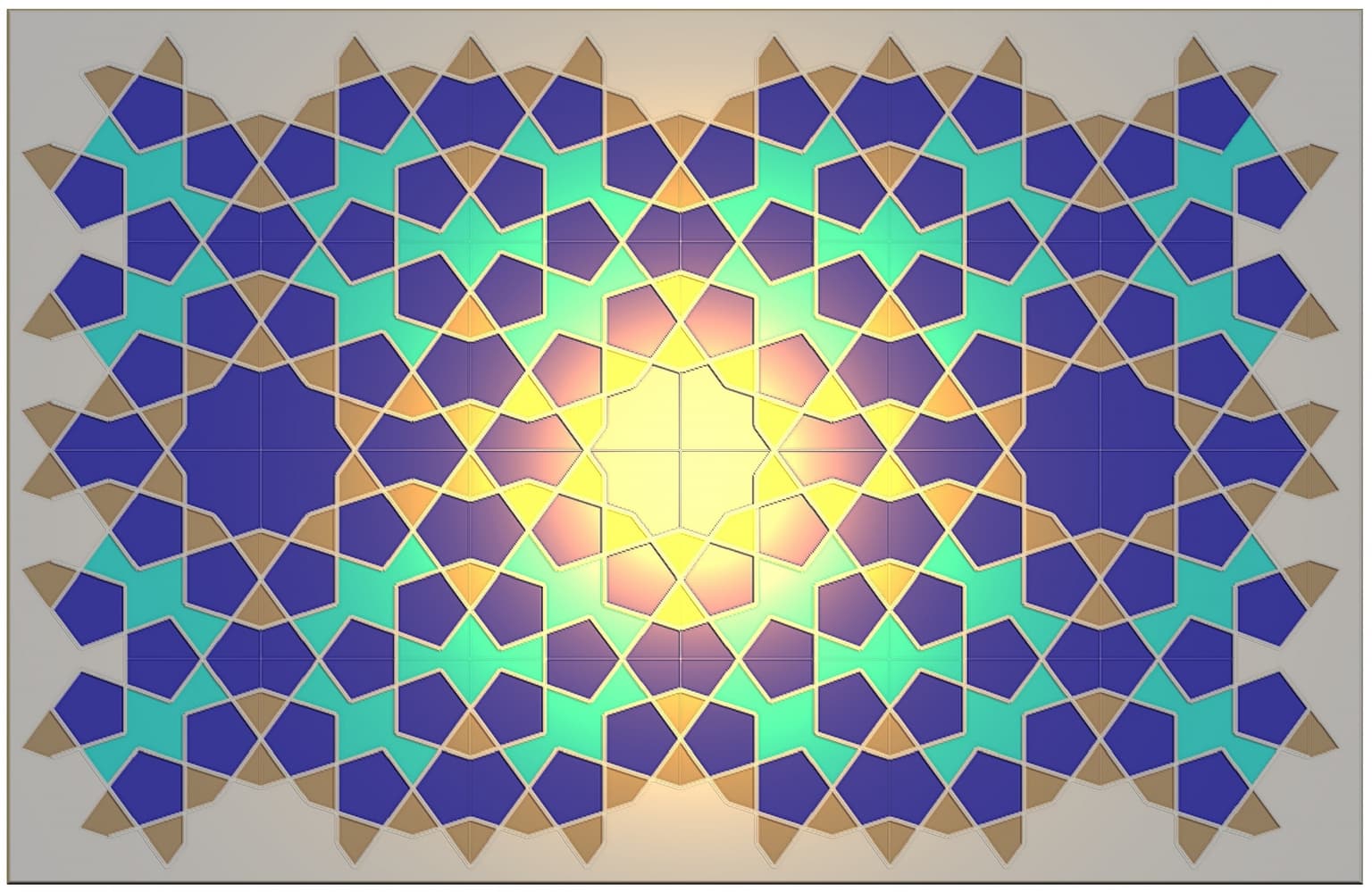2012 Joint Mathematics Meetings
Reza Sarhangi
Artists
Reza Sarhangi
Mathematics Professor
Department of Mathematics, Towson University
Towson, Maryland, USA
Statement
I am interested in Persian geometric art and its historical methods of construction, which I explore using the computer software Geometer's Sketchpad. I then create digital artworks from these geometric constructions primarily using the computer software PaintShopPro.
Artworks

Kharragan I
16" X 20"
Digital print
2011
Kharragan I (January 2011) is an artwork based on a design on one of the 11th century twin tomb towers in Kharraqan, western Iran. The artwork demonstrates two different approaches that are assumed to have been utilized centuries ago to create the layout of the pattern, which is at the center of the artwork. From left to right, the artwork exhibits the construction of the design based on a compass and straightedge. From right to left, we see another approach, the Modularity method, to construct the same design using cutting and pasting of tiles in two colors. These two methods of constructions were presented at “A Workshop in Geometric Constructions of Mosaic Designs” during the 2010 Bridges Conference, Pécs, Hungary.

DahPar I
Digital print
2011
DahPar I (September 2011) is an artwork based on a design in the class of Decagram Interlocking Star Polygons. The common element for the course of study in this class is a special ten pointed star polygon. This special concave polygon, which is called a decagram for convenience, is the dominant geometric shape of a series of polyhedral tessellations that all consist of the same common motifs. The decagram can be created through the rotation of two concentric congruent regular pentagons with a radial distance of 36° from each others’ central angles. However, to create a decagram-based interlocking pattern, a craftsman-mathematician needs to take careful steps to locate a fundamental region. The rectangular-shaped fundamental regions, which are constructed using radial grids, have different proportions for their dimensions.